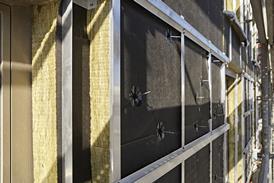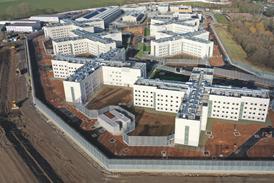Installers risk missing out on a valuable new revenue stream by neglecting IP innovations, warns Peter Goodenough, managing director UK for HI SEC International.
The British security industry is very traditional … and that’s a problem. At the risk of generalising, I think it is fair to say than most security installers will buy a product and install it – job done. Very rarely do installers return to the clients and sell more advanced security upgrades. Instead, they collect maintenance revenues each year and patiently wait for the system to grow old, so they can fight to secure the new contract to install a new system.
Given the nature of our flourishing security sector, this approach seems unnecessarily reactive. Yet much of the blame sits squarely with manufac-turers, many of which have failed to provide installers with the adequate knowledge and skills that would enable installers to actively sell new security innovations to existing clients – before the lifecycle of the old system comes to an end.
The shift towards IP-enabled security is a prime example of fast-moving technology advancements outstripping the experience and knowledge of many installers. It’s a tragic situation, as the new technology can offer installers a wealth of practical and financial advantages over the more familiar, traditional controller-based systems. Neglect the subject, and you could find your business left behind by the competition.
Time to lose the fear factor
Internet Protocol (IP) and the higher level Transmission Control Protocol (TCP) are delivery systems for computer data. Although deploying TCP/IP requires a very different approach for many installers, the technology can be relatively straightforward to implement.
This is because the majority of IP-enabled security boxes are similar to the traditional variety in terms of functionality, as all are designed to communicate across the IP network. The critical difference is the way the IP-enabled system com-municates, to ensure a secure system is installed.
The beauty of a TCP/IP system is that it is compact, with “plug and play” interface boxes that are approximately 10x15 cm in size. As a manufacturer, we have tried to make the IP boxes as user-friendly as possible for the installer. Built into each box is a simple method of programming so, for example, all the parameters can be typed in using a web browser. This means a system can now be pre-configured as required before being delivered to the site, thereby greatly reducing installation time.
For installers who have spent many back-breaking years pulling cable, the transition to IP is a godsend, as the cabling requirements are much reduced compared to traditional controller-based systems. An IP-enabled door may have just half the wiring of a traditional system, and the benefits are cumulative. If you are wiring five doors for access control, a traditional system could realistically require twenty times the wiring of a new TCP/IP system connecting via a Cat 5 hub or directly to the local area network (LAN).
Up to you to produce the proof
With the move to IP, installers will also find that the traditional role of the security manager is now subordinate to that of the IT manager, who has new and specific concerns. Once you start sharing space on a client’s network and a problem is identified, then it is your problem until you prove otherwise due to the increasing pressure and workload of the IT department. For this reason, the best IP security systems available today have diagnostics built into the box. Diagnostics can be turned on, then left to run for a day or two before you return to collect a printout. You can then produce the proof to the IT staff that a problem is either not down to your system, or if there is a failure then it can be rapidly identified and repaired. Rest assured that you do not have to source and purchase expensive software and diagnostics tools – or spend time attempting to analyse the problem manually.
Many manufacturers have failed to provide installers with the IP knowledge and skills that would enable them to sell new innovations to their existing clients
When installing an IP-enabled security system, installers should take care to deploy equipment that has been specifically designed for the security indus-try – not a product that has been simply re-boxed.
To maximise profits from IP installations, it is critical to deploy the relevant technology. Yet many hardware providers still deliver off-the-shelf solutions that are repackaged for the security sector. The great danger of such products is that they play directly into the fears of the IT Manager: incorporating access control with IP by using an inappropriate off-the-shelf product compromises the very structure of the network itself. This is because the IP nodes may be left completely unprotected, creating an open back door into the network’s security through which a hacker can stroll and cause immeasurable harm.
Cost effective maintenance
Overall, there’s no denying the massive potential for revenue generation that comes from successfully tying the security system into the corporate IT strategy. With IP, the security system now resides on a permanently maintained network, and it is the instigation of regular main-tenance that creates additional income across the life of a system installation. While generating revenue through ongoing main-tenance, wouldn’t it be nice if you only had to send an engineer every six months instead of every two or three weeks?
Gone are the days when remote site maintenance required one engineer to be with the management system and another on the telephone at the remote site. Onboard diagnostics can cut that down to one person through the use of the reader display to service the system, therefore immediately halving the cost of the maintenance to the installer and increasing the capability to service more sites.
Furthermore, because of the remote access capability of IP, with any PC or laptop connected across a LAN, WAN or the Internet, a single engineer can service a system and carry out diagnostics from anywhere in the world. What if you are asked to offer a four-hour maintenance response as part of your service contract? That’s a pretty tall order today, and difficult for anyone to achieve due to traffic congestion in many areas. Now imagine that you can do an initial diagnostic or re-set the system remotely. Suddenly, there is no need for a four-hour response. The installer need only offer a twelve-hour engineer response, which can result in a significant long-term saving. Installers can make more efficient use of their engineers, and only need to have one engineer on call – not two.
Strangely, the installer community is not yet capitalising on this advancement. Is it lack of aware-ness or fear of the unknown? Surely, the diagnostic and maintenance opportunities alone are a truly strong argument for the adoption of IP-enabled installations. The cost savings can be considerable, and there is the tantalising potential for increased profit margins. Remember this next time your client’s service contract comes up for renewal and it once again attempts to reduce the price.
Deploying IP is an effective way to meet these demands and add further value without reducing the overall income from the installation.
Remodelling revenues
Modifying a security system is without doubt the easiest way to continue to generate further income across the life of the installation
Modifying a security system is without doubt the easiest way to continue to generate further income across the life of the installation, and no aspect of access and control security offers more opportunities than Chip and PIN card solutions.
The popular 125 Khz proximity card solution currently leads the industry, but in adopting this solution people have taken a step backwards and downgraded their security system. Why? These cards are simply not secure. An identity thief can steal the data on your card while it is still in your pocket, by activating it with a long-range trans-mitter and receiver. Once on, the card continuously sends out its number when in range of the receiver, so the thief can record it, clone it, and enter the building posing as a genuine employee – you.
Some installers are already aware of this glaring breach of security protocol, but for many others and their clients, this will be new information well worth knowing. From an installer’s point of view, there is a serious danger of litigation from clients if 125 Khz cards continue to be sold as a ‘very secure’ solution. If an installer presents the facts against the deployment of 125 Khz cards, and the client still wishes to proceed after all these arguments, then I would strongly advise documenting the decision. Ask your chosen manufacturers as many questions as you need to assess and understand the extent of this problem.
The revenue from modifying a current system comes then from either installing a PIN (Personal Identity Number) reader which will further secure a 125 Khz card, or upgrading to the extremely secure Mifare Chip and PIN solution. This should be a simple process of switching over the module in the card reader in better IP security systems.
The Mifare solution offers additional security and handshaking, with encrypted data requests and transmissions occurring between the reader and the card making it impossible to copy.
Incorporating manufacturer-locked ‘read and write’ keys for secure access control, these future-proof cards are store biometric identification for verification, such as fingerprints. Mifare is a standardised multi-application tool, so alongside the high level of security it can, for example, also support the storage of visas, travel permits, passports, health and safety certification, medical and training records. It supports cashless vending, can monitor use of central services such as the photocopier, and can control the logging onto a PC. It can therefore provide additional security for the IP network and for individual PC content. The cards can even monitor time and attendance.
All these applications, and the relevant data, can be distributed to the door by ‘smart’ reader terminals via an IP network to provide the right information, to the right people, at the right location - when they need it. Such flexibility offers numerous opportunities for the IT manager to incorporate facilities and hardware alongside the IP-enabled security system, all of which will require installation, diagnostics and maintenance.
Understand and answer the client’s concerns
As an installer, it lies firmly in your hands to demonstrate to the IT and security managers the value of incorporating access and control, alarm monitoring and video verification protocols onto the IP network. Bandwidth demands are no longer a concern as the average network increases in size (access control systems might use just 0.01 per cent of the bandwidth of a 100 Mbit Network). The amount and the size of IT equipment coming onto the network is much reduced from traditional systems, and so long as equipment is chosen wisely, security issues including the threats from viruses and particularly hacking can be avoided.
Once installers have addressed such concerns, they can offer more effective, more responsive security systems that are not only easier to install, test and service, but also offer greater flexibility and can be modified. IP-enabled security systems can provide a broader range of revenues for the installer, combined with increased economic and security benefits for the customer. That’s exactly why they are the future for our industry. The question is, are installers ready to move forward with confidence?
Source
Security Installer
Postscript
Useful addresses:
For Mifare visit www.ismart.org.uk
For IP enabled security www.hisec.com





















No comments yet